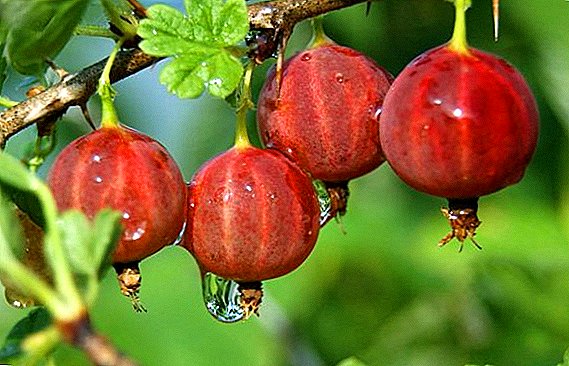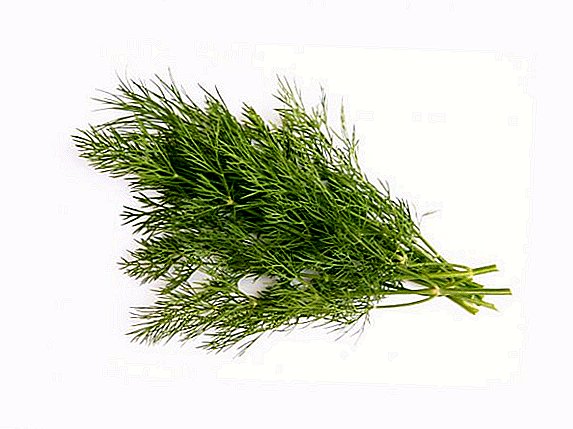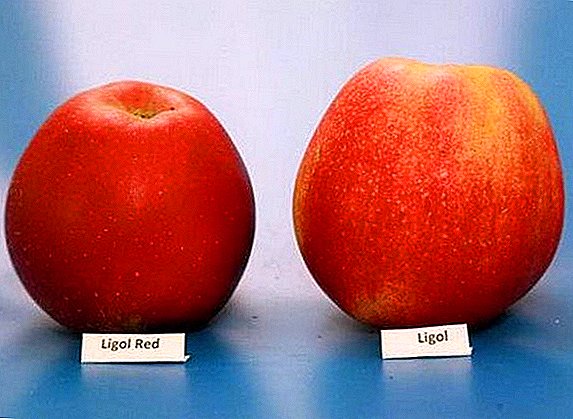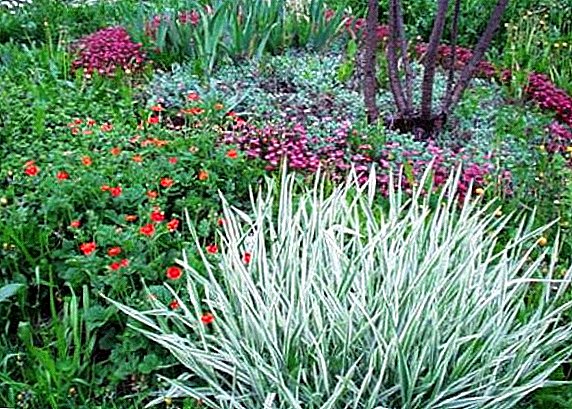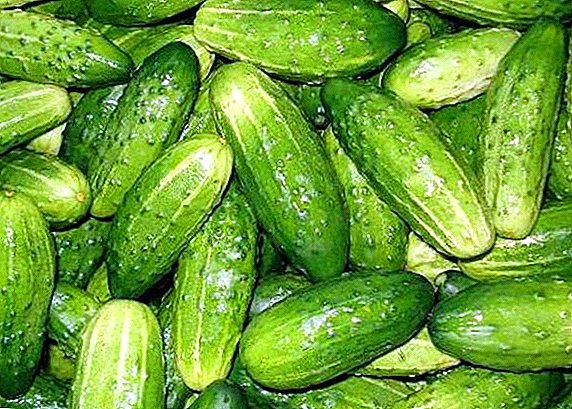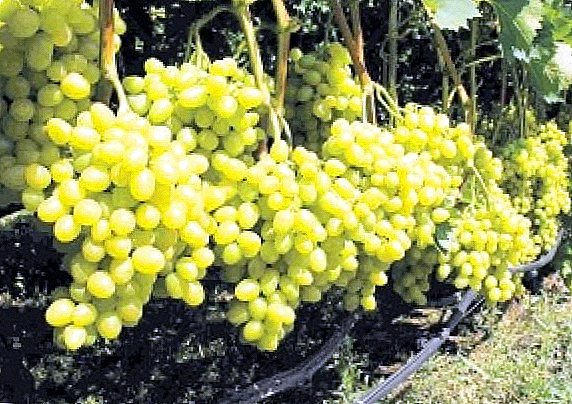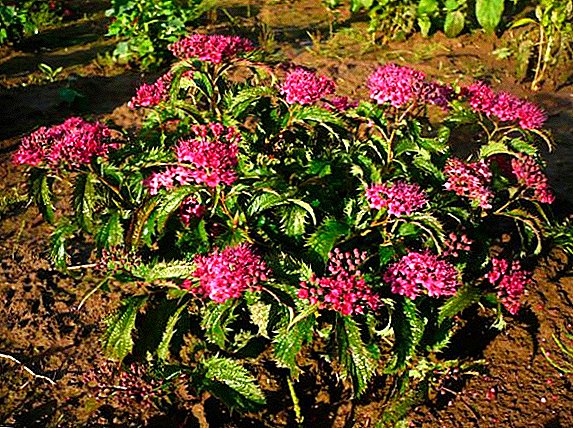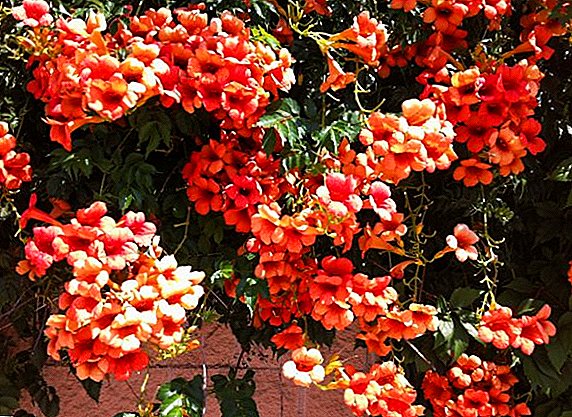 Campsis (TECOM, pipe color) - a delightful decoration for your garden. This large, amazingly beautiful, richly flowering bush all summer and until late autumn will delight everyone with its flowering and pomp, while you do not need much effort to grow and care for it.
Campsis (TECOM, pipe color) - a delightful decoration for your garden. This large, amazingly beautiful, richly flowering bush all summer and until late autumn will delight everyone with its flowering and pomp, while you do not need much effort to grow and care for it.
We offer to get acquainted with this wonderful liana, namely with the types of Kampsis, with the features of planting, care and preparing it for winter and how the Campsis is used in landscape compositions.
Types of Kampsis
There are only two natural types of kampsis - the rooting kampsis and the large-flowered kampsis or Chinese, and these species gave life to the third species - the hybrid kampsis.
 Campsis rooting - the most popular type of kampsis. This is a large vine with long shoots (7-9 meters), with powerful roots in the internodes with which it can cling to any surface.
Campsis rooting - the most popular type of kampsis. This is a large vine with long shoots (7-9 meters), with powerful roots in the internodes with which it can cling to any surface.
Each petiole contains 9-11 leaf plates. The leaves are long (up to 20 cm), pinnate, bright green and bare above, light below because of pubescence (covers the entire leaf plate or is only located on the veins).
The flowers are tubular, up to 9 cm in length and up to 5 cm in diameter, gathering 10–15 pieces in wreath inflorescences at the tips of the shoots, have a bright orange halo and fiery red limb.
Campsys rooting favors a warm climate, but can withstand short-term frosts down to -20 ° C. In culture, this species has been known since 1640 and is represented by such decorative forms: early, golden, dark purple, gorgeous.
 Campsis grandmother or Chinese - it is a flexible vine that does not have aerial roots, it braids support with young shoots. Leaves are pinnate, up to 6 cm in length, with 7–9 leaves on the petioles. The pubescence of the Campsis grandiflora is completely absent.
Campsis grandmother or Chinese - it is a flexible vine that does not have aerial roots, it braids support with young shoots. Leaves are pinnate, up to 6 cm in length, with 7–9 leaves on the petioles. The pubescence of the Campsis grandiflora is completely absent.
Flowers are tubular-funnel-shaped, red-orange, large (up to 8 cm in diameter). Flowering begins three years after germination. Fruits in the form of a pod-shaped box, 15-20 cm in length.
Grade heat-loving, not frost-resistant (can not tolerate short-term frost to -18 ° C). In culture, registered since 1800.
 Campsis hybrid - This is a fairly young decorative vine, with flexible vines, 4-6 cm in length. Often grows as a shrub with a spreading crown, at least - in the form of a climbing plant.
Campsis hybrid - This is a fairly young decorative vine, with flexible vines, 4-6 cm in length. Often grows as a shrub with a spreading crown, at least - in the form of a climbing plant.
The leaves are complex, consist of 7-11 leaves. Its flowers are large, orange-red, tubular-funnel. Frost resistance is good. In culture, view since 1883.
Did you know? There are no plants longer than tropical vines in the world. On one of the slopes of the Sierra Madre mountain range in California, a hundred-year-old wisteria liana grows, which is 150 meters long and weighs more than 200 tons, and at the same time covers an area of 4,000 m².
How to plant Kampsis on the site
Campsis - very hardy and viable vine, its planting is simple and even for beginner gardeners. It is only necessary to follow certain instructions.
Optimum terms for landing
Kampsis seedlings are planted in the ground only after the last frost. The optimal time for planting seedlings with already developed buds is the beginning of April.
Place and ground for Kampsis
Campsis requires a lot of light and heat for vigorous growth and bud formation. Even with a strong heat direct sunlight will not be able to cause plant burns. For planting, select open areas on the south side of the structures to protect the plant from strong gusts of wind and drafts.
 It is also advisable to plant a campsis away from the windows of houses, since insects are flashing energetically on it. The best places for growing Kampsis are fences and fences, which the plant will braid around and thereby form a hedge.
It is also advisable to plant a campsis away from the windows of houses, since insects are flashing energetically on it. The best places for growing Kampsis are fences and fences, which the plant will braid around and thereby form a hedge.
Important! It is not recommended to plant the campsis close to the house, as this can lead to the fact that the creeping roots of the plant will damage the foundation, and, expanding, the campsis can penetrate between the bricks in the wall and damage the laying.Campsis is not at all capricious to the soil and can grow even in limestone soil, which makes growing it in the garden every year more and more popular. But in order to get more decorative plants, the campsis should be planted in fertile, loose, pH-neutral soils, rich in minerals and trace elements.
Preparing a landing site
If the soil on your site is not nutritious, then it will be necessary to prepare the site for the spring planting of the campsis from autumn. For this:
- Dig a hole about 50 cm in diameter and 55-60 cm deep.
- In the extracted ground, add half a bucket of humus and half a liter of complex mineral fertilizer, mix well.
- For drainage at the bottom of the pit, fill the clay or sand, fine gravel (15-20 cm).
- Then pour the soil on top of the hill and leave it all the way until spring.
Planting procedure for Kampsis seedlings
- In a pit prepared from autumn, lower the seedling of Kampsis.
- Straighten its roots well.
- Cover with soil and lightly tamp.
- Then generously water the plant.
- At the end of the planting circle the plant in a circle with peat.

Kampsis support
Campsis is initially necessary to tie up and have a good support (best removable). Young plants are recommended to use removable supports from wire or synthetic ropes.
Removable support will provide an opportunity to provide a normal winter shelter, it is placed together with a liana under the shelter on the ground, without taking the roots. But also perfectly suited as supporting structures fences, gratings, and gazebos.
Did you know? North America is considered the birthplace of Campsis.
The best partners for Kampsis
Campsis is best in landscape design looks like a tapeworm. But on large walls and trellis, it is possible to combine it with other strong-growing vines, such as: clematis, mountain clematis, wisteria wisteria formosa, or achebia five. The following plants are used as grazing plants: sage forest, lavender narrow-leaved, cattle Fassen, Santolina cypress, peony lacticulum, stonecrop high and various types of geranium. To create a beautiful foreground, you will need low-growing shrubs - Potentilla shrub, Thunberg barberry or Japanese spirea.
The following plants are used as grazing plants: sage forest, lavender narrow-leaved, cattle Fassen, Santolina cypress, peony lacticulum, stonecrop high and various types of geranium. To create a beautiful foreground, you will need low-growing shrubs - Potentilla shrub, Thunberg barberry or Japanese spirea.
Campsis is used as a hedge, for decorating the walls of houses, lattice fences, arbors, pergolas and long arches (they adorn the entrance to the garden or make a passage between the buildings in the courtyard)
How to care for Kampsis in the garden
Although Kampsis is a rather exotic plant, care for it in the open field consists of procedures that are standard for each plant - watering, loosening the soil, removing weeds, pruning, feeding and protecting against pests and diseases.
Watering creepers
 This vine is a rather drought-resistant plant, but still it is necessary to know how to water the campsis correctly. To preserve its decorative and generous flowering still requires regular watering. This is especially true on dry and sultry days, as well as during flowering.
This vine is a rather drought-resistant plant, but still it is necessary to know how to water the campsis correctly. To preserve its decorative and generous flowering still requires regular watering. This is especially true on dry and sultry days, as well as during flowering.
Important! Do not allow excessive irrigation and stagnation of water in the soil, since the roots of Campsis will begin to rot, the plant will wither and may die.Low-growing perennial bushes can be planted near the liana so that they retain soil moisture.
Top dressing for plentiful flowering
Campsis is growing quite well without any additional feedings, but for the duration of abundant flowering nitrogen-phosphorus fertilizers are applied.
Correct pruning and shaping of the kampsis
Kampsis shoots grow quite quickly, and their growth can be restrained only by pruning. However, pruning will help achieve a generous flowering next season. If we talk about when and how to cut the campsis, it is done in the autumn, at the end of the growing season or in the spring before the buds swell, forming the skeleton of the plant in the following way:
- In a young plant, choose two or three strong, formed shoots.
- All other shoots pruned pruners.
- Growing branches during the growing season should be tied to a pole or trellis, while directing them in the desired direction.
- Repeat the same process for three or four years in a row until the stem of the plant grows to the desired size.
- Then each year it will be necessary to do a strong pruning to the skeletal branches and leave three or four new shoots, cutting them into two or three buds until the entire area allocated to it is occupied by the plant.

Important! In order to rejuvenate the plant, some gardeners recommend doing absolute pruning, leaving shoots only up to thirty centimeters in height.
How to prepare Kampsis for winter
To ensure that the wintering of the Kampsis is safe, it must be covered. To do this, you will need to remove the plant from the trellis or supports, put it on the ground and wrap it with hay or fir spruce leaves, sawdust or dry leaves, and cover it from above with plastic wrap, securing it at the edges.
If an arch, fence or other structures were used as a support for the creeper, then you can simply sprinkle the roots of the creeper with sand or close with spruce branches, and wrap all the stems with lutrasil (several layers) and put plastic film over it.
But it is still better to use the removable supports and put the shoots on the ground, and then cover. In the spring, the plant is again attached to its habitat, and if any shoots are frozen out, they must be removed.
Resistance of the kampsis to pests and diseases, treatment in case of damage
 Campsis is very resistant to all sorts of diseases and almost not exposed to pest invasion. He can rot the roots of excess moisture, in dry and hot weather he can be bothered by aphid, which is wound up in the leaves or in flower buds.
Campsis is very resistant to all sorts of diseases and almost not exposed to pest invasion. He can rot the roots of excess moisture, in dry and hot weather he can be bothered by aphid, which is wound up in the leaves or in flower buds.
Aphid sucks vegetable juice from buds, leaves and shoots. It is very easy to get rid of it; it is only necessary to treat the plant with an alcohol solution of household soap.
These are the simple conditions of planting and caring for Kampsis. The time spent caring for the vine will turn into wonderful beauty in your garden.



